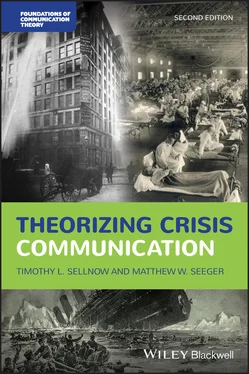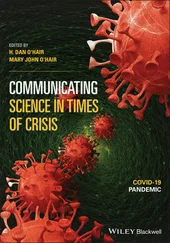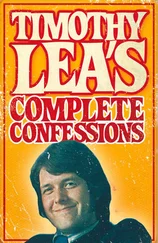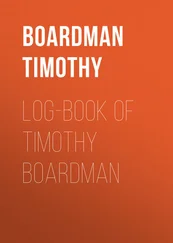The ongoing COVID-19 pandemic will no doubt inspire a new generation of crisis communication theorists and professionals. We welcome you into the vibrant and growing area of crisis communication scholarship and practice. Crisis communication is an applied area of scholarship grounded in a solid theoretical foundation. Applied communication research seeks “to make a difference in the world through examining some feature of human communication” (Cissna, 2000). British Prime Minister Winston Churchill is credited with saying, “Never let a good crisis go to waste” during the Second World War (Mutter, 2016, para. 1). We have already seen special calls for research on COVID-19, first from the Journal of International Crisis Communication Research and then from Health Communication among other journals.
The proliferation of scholarship on the COVID-19 pandemic comes on the heels of a steady increase in crisis communication research. Indeed, some researchers have joked that we should rename divisions within our professional associations because of the dominance of crisis communication scholarship in these divisions. Mega crises have long captured the imagination of researchers, including myself. Indeed, the 9/11 terrorist attacks and the 2005 Hurricane Katrina solidified my dedication to crisis communication scholarship while I was in graduate school. Likewise, the 2009 H1N1 pandemic launched my focus on social media and crisis communication, including the social-mediated crisis communication model that my colleagues and I have developed over the past decade (see Chapter 8 for a discussion of social media and crisis communication theories). More recently, the tragic tornadoes that have devastated portions of the Southeastern United States have motivated my team’s collaboration with the National Weather Service to improve tornado risk and crisis communication, including theories about warning communication (see Chapter 3 for a review of these theories).
As we think about the crises to come, this book provides the necessary framework for developing robust research grounded in theory that can inform practice (see Chapter 12). The many functions of crisis communication theory include organizing and describing observations, explaining relationships among constructs, predicting what will happen next, controlling outcomes when feasible, informing practice, facilitating critique, and promoting inquiry, as further discussed in Chapter 2 of this book. This book also showcases the wide variety of contexts to which we apply crisis communication theory including crisis development (Chapter 4), crisis outcomes (Chapter 5), emergency responses (Chapter 6).
While reading this book, I encourage you to consider how theory can guide crisis communication practice – including areas for which we have limited knowledge. As a scholarly community, we create the most impact when we develop and test theories through active engagement with communities of practice. As Sellnow and Seeger discuss in Chapter 1 of this book, crisis communication is a relatively young field of study. In the decades to come, the field will continue to grow and mature. My recommendation is that as you read this book, consider how you can contribute to our knowledge base whether through research, theory development, and/or your future careers.
1 Cissna K. M. (2000). Applied communication research in the 21st century. Journal of Applied Communication Research, 28, 169–173. https://doi-org.proxy-um.researchport.umd.edu/10.1080/00909880009365563
2 Lewin K. (1951). Problems of research in social psychology. In D.Cartwright (Ed.), Field theory in social science: Selected theoretical papers (pp. 155–169). Harper & Row.
3 Mutter J. (2016, April). Opportunity from crisis: Who really benefits from post-disaster rebuilding efforts. Foreign Affairs. www.foreignaffairs.com/articles/2016-04-18/opportunity-crisis
4 WHO. (2020, February). WHO director-general’s opening remarks at the media briefing of Ebola and COVID-19 outbreaks. www.who.int/dg/speeches/detail/who-director-general-s-opening-remarks-at-the-media-briefing-on-ebola-and-covid-19-outbreaks
1 Introduction to Crisis Communication
Crises are increasingly important social, political, economic, and environmental forces and arguably create more change, more quickly than any other single phenomenon. Crises have the potential to do great harm, creating widespread and systematic disruption, but they may also be forces for constructive change, growth, resilience, and renewal. They can quickly reshape institutions, create shifts in demographics and populations, alter ecosystems, undermine economic stability, and rapidly alter widely held beliefs. Understanding these events, therefore, is critical. A significant component of that understanding involves clarifying the role of communication processes in the onset, management, resolution, and meaning of crises.
Recent examples, including the COVID-19 pandemic, the 2018 Camp Fire in Northern California, 9/11 terrorist attacks, Hurricane Maria in Puerto Rico, Hurricane Katrina in New Orleans, and the 2004 Indian Ocean tsunami illustrate the rapid change that happens following a crisis. The events of 9/11 precipitated not only a fundamental rethinking of federal policy but also created the most comprehensive reorganization of the U.S. federal government to occur in decades. Hurricane Maria devastated the island of Puerto Rico, claimed 3,000 lives, and prompted a massive migration of residents from the island to the U.S. mainland. Hurricane Katrina also created a major demographic shift in New Orleans and prompted new understandings of risk and the role of governments in response to disasters. The 2004 tsunami claimed as many as 230,000 lives in 14 countries, wiped away entire communities, and created widespread economic and environmental damage. It also called attention to the risks associated with tsunamis and development in coastal areas. The 2018 Camp Fire was the worst wildfire in California in more than 100 years, claiming 85 lives and costing over $1.5 billion. The COVID-19 pandemic was the most devastating infectious disease outbreak since the 1918 influenza pandemic. Public health professionals and disaster researchers had been warning about the risks of a global pandemic for decades.
Historically, the worst crises have been earthquakes and infectious disease pandemics. The 1918–1919 influenza, or Spanish flu, pandemic, is estimated to have infected 500 million people worldwide and may have resulted in more than 20 million deaths. The worst earthquake of the twentieth century occurred in Tangshan in China in 1976. Official death tolls indicate that about 255,000 people lost their lives and another 150,000 were injured. Crises, big and small, natural and human caused, are inevitable. In fact, many scholars suggest they are occurring with more frequency and causing more harm than they have in the past (Perrow, 1984; Seeger et al., 2003).
While avoiding all crises and disasters such as earthquakes and tsunamis is impossible, some can be avoided and most can be more effectively managed. Crisis management is a well-established practice drawing on a variety of fields including medicine, sociology, psychology, engineering, logistics, political science, criminal justice, as well as communication. In fact, it simply would not be possible to conduct strategic crisis management without a comprehensive communication plan, and, in many cases, “communication is the essence of crisis management” (Coombs, 2010, p. 25). Agencies, both public and private, such as the Federal Emergency Management Administration (FEMA) and the American Red Cross, have a critical role in creating crisis response capacities. Internationally, the World Health Organization (WHO) and the International Committee of the Red Cross and Red Crescent have taken on more of a crisis management mission. Crises are, by definition, interdisciplinary events and often reach across regional, cultural, economic, and political boundaries. Some researchers have pointed out that this interdisciplinary aspect has made integration of both research and practice more challenging (Pearson & Clair, 1998). Along with communication, integration, coordination, and cooperation are critical to negotiating these boundaries and to effective crisis management and response.
Читать дальше












